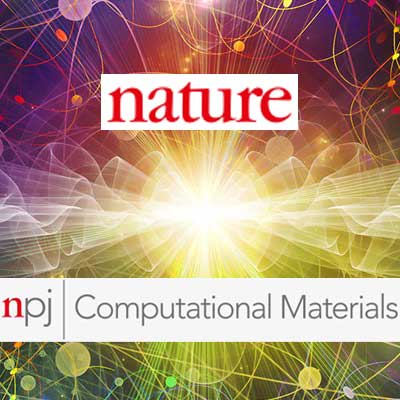Latent Ewald summation for machine learning of long-range interactions
IF 9.4
1区 材料科学
Q1 CHEMISTRY, PHYSICAL
引用次数: 0
Abstract
Machine learning interatomic potentials (MLIPs) often neglect long-range interactions, such as electrostatic and dispersion forces. In this work, we introduce a straightforward and efficient method to account for long-range interactions by learning a hidden variable from local atomic descriptors and applying an Ewald summation to this variable. We demonstrate that in systems including charged and polar molecular dimers, bulk water, and water-vapor interface, standard short-ranged MLIPs can lead to unphysical predictions even when employing message passing. The long-range models effectively eliminate these artifacts, with only about twice the computational cost of short-range MLIPs.

远程相互作用机器学习的潜埃瓦尔德求和
机器学习原子间势(mlip)通常忽略了远程相互作用,如静电和色散力。在这项工作中,我们引入了一种简单有效的方法,通过从局部原子描述符中学习隐藏变量并对该变量应用Ewald求和来解释远程相互作用。我们证明,在包括带电和极性分子二聚体、散装水和水蒸气界面的系统中,即使采用消息传递,标准的短程mlip也可能导致非物理预测。远程模型有效地消除了这些伪影,而计算成本仅为短程mlip的两倍左右。
本文章由计算机程序翻译,如有差异,请以英文原文为准。
求助全文
约1分钟内获得全文
求助全文
来源期刊

npj Computational Materials
Mathematics-Modeling and Simulation
CiteScore
15.30
自引率
5.20%
发文量
229
审稿时长
6 weeks
期刊介绍:
npj Computational Materials is a high-quality open access journal from Nature Research that publishes research papers applying computational approaches for the design of new materials and enhancing our understanding of existing ones. The journal also welcomes papers on new computational techniques and the refinement of current approaches that support these aims, as well as experimental papers that complement computational findings.
Some key features of npj Computational Materials include a 2-year impact factor of 12.241 (2021), article downloads of 1,138,590 (2021), and a fast turnaround time of 11 days from submission to the first editorial decision. The journal is indexed in various databases and services, including Chemical Abstracts Service (ACS), Astrophysics Data System (ADS), Current Contents/Physical, Chemical and Earth Sciences, Journal Citation Reports/Science Edition, SCOPUS, EI Compendex, INSPEC, Google Scholar, SCImago, DOAJ, CNKI, and Science Citation Index Expanded (SCIE), among others.
 求助内容:
求助内容: 应助结果提醒方式:
应助结果提醒方式:


